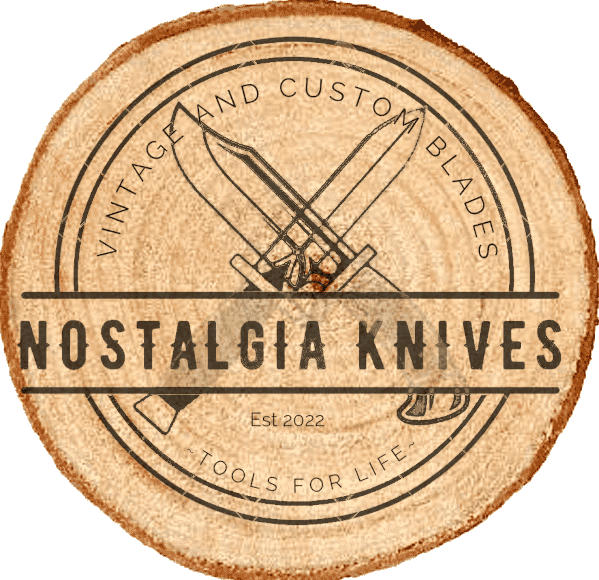Knife-ology Glossary
Knife-ology – the glossary of Knife and Sword terms;
GRIND LINE – The meeting point of a grind with a flat surface or opposing grind. In the illustration above, the line shown is where the swedge meets the flat and the primary bevel.
SWEDGE (aka; swage) – The tapered or beveled false edge (usually not sharpened) along the spine of the knife. It reduces the point thickness for improved piercing ability.
JIMPING – Repeating ridges or cuts that may be decorative or saw use (such as those on the spine), or used for additional grip on the knife (such as the thumb rise).
SPINE – The top edge of the knife, opposite of the sharpened blade edge. The spine runs all the way from the tip to the butt.
THUMB RISE (aka; thumb ramp) – The incline or drop in the spine, meant to provide a place for the user’s thumb while cutting.
BOLSTER – A thick junction between the handle and the flat of the blade. Bolsters can be found at the front and the rear of some knives, and they strengthen the knife and add balance.
GUARD – Part of the handle that prevents the user’s hand from slipping. A curved quillon on the handle may form the guard, or a knife may have a separate guard plate installed between the handle and blade providing a stop to keep the users hand from sliding down the blade on impact.
FULLER (aka; blood groove) – A groove cut or forged into the blade, often at the center of double-edged knives and swords. These have been called “blood grooves” due to the myth that they release suction or vacuum created by stabbing a live animal, thus allowing blood to run out more easily. In reality, a fuller lightens the blade by removing steel, and may also stiffen some blade designs.
SERRATION – Repeated jagged cuts into the blade edge, providing the ability to saw and tear through tough materials.
CROSS GUARD – The individual bars on either side known as quillon, is a bar of metal at right angles to the blade, placed between the blade and the hilt.
HILT – The hilt (rarely called a haft or shaft) is the handle of a knife, dagger, sword, or bayonet, consisting of a guard, grip and pommel. The guard may contain a cross-guard or quillon.

